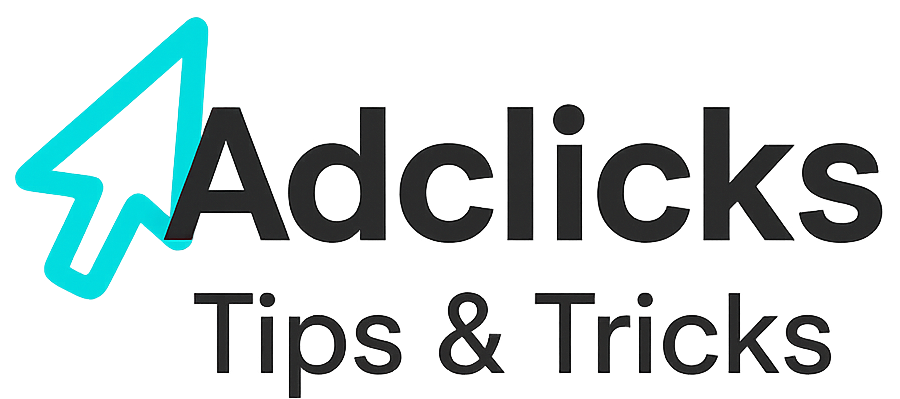The Nature of Fark and Why It Still Matters
Fark is one of the internet’s oldest social news communities, built on a rhythm that never depended on algorithms or influencer culture. It’s a hub of user-submitted links, sorted by editors into daily categories that range from serious news to humorous oddities. What makes Fark unique is that its entire value rests on its readership’s appetite for discovery. The typical visitor doesn’t scroll through selfies; they click links, read, and comment. For publishers, that click is the entry point that can deliver high-quality referral traffic.
The site’s structure feels simple but is deceptively powerful. Links are chosen by editors and discussed in comment threads where users unpack, challenge, and extend the story. Readers on Fark are loyal to content that rewards their curiosity. That means when a publisher’s link is chosen, the result can be thousands of visitors arriving within minutes. When those visitors land on a well-built page containing clean ad placements such as Adclicks units, the publisher gains the double benefit of exposure and monetization.
Fark’s endurance also makes it culturally valuable. It has existed through multiple waves of online platforms, surviving MySpace, Digg, Reddit booms, and social media resets. Its readers value originality and tend to remember domains that give them real stories rather than recycled press releases. That trust—built over years—means a publisher who handles a Fark wave responsibly often sees follow-on visits later through bookmarks or direct type-ins, all of which can continue to feed Adclicks performance long after the initial burst.
Audience, Culture, and Behavioral Patterns
Fark’s community tilts toward a mature demographic. External metrics consistently show the largest age bracket as adults in their thirties and forties, predominantly from the United States, and leaning slightly male. They are information seekers who appreciate irony and intelligence in equal measure. In comments, humor blends with real analysis; in links, readers prize substance with a headline twist. These users often arrive from workplaces, desktops, or laptops during weekday hours, which explains the steady pulse of midday traffic spikes.
Because of that work-hour orientation, Fark visitors linger longer than casual social media users. They open multiple tabs, compare articles, and share commentary in thread discussions. The depth of engagement helps publishers: each longer session means more visible impressions and greater opportunity for ad exposure through networks like Adclicks. These users might not click every banner, but their time on page drives value through consistent visibility metrics and the potential for multiple impressions per session.
Culturally, Fark sits somewhere between a newsroom’s water-cooler and an internet pub. The conversations can be wry but rarely chaotic. Readers enjoy challenging claims and verifying details. A publisher who respects that tone—by writing clearly, sourcing carefully, and linking original materials—will thrive. That cultural fit carries straight into how Adclicks performs. Since Adclicks delivers contextually relevant content ads, an article with tight, accurate metadata attracts better-fitting ads, which convert more effectively. The publisher’s reward grows from precision, not hype.
Understanding the Traffic Curve
A Fark referral is fast, sharp, and often intense. When a link is green-lit on the main page, the first few hours can produce a flood that dwarfs normal daily traffic. Publishers call it the “Fark spike.” The influx can overwhelm servers that are not cached or load-balanced. Yet those spikes, if handled correctly, can become some of the most lucrative hours of a site’s life. Every fresh session triggers page renders that display the publisher’s Adclicks units, creating bursts of high-value impressions.
After the spike, a long tail of traffic often continues for days. Fark threads stay visible in archives, search engines index the linked discussion pages, and users sometimes revisit old threads. That pattern rewards publishers who structure internal links smartly. If the visitor’s first landing page naturally guides them to one or two related articles, the traffic multiplies beyond the initial referral. Each extra page view multiplies ad exposure, and with Adclicks tags present throughout the site, revenue continues as readers explore deeper.
Timing also matters. Because Fark’s readership behaves predictably—weekday mornings and afternoons being peak—publishers can schedule fresh, Fark-friendly posts early in the day to maximize approval odds and readiness for traffic bursts. Having Adclicks units pre-tested for page speed ensures that when the spike arrives, load times remain short and users actually see the ads before they scroll. That marriage of technical preparation and timing often determines how profitable a Fark feature becomes.
What Types of Content Work Best
The heart of Fark’s appeal lies in the headline. A line that’s concise, clever, and grounded in truth will always outperform something ambiguous or manipulative. Publishers whose material provides a clear payoff—data, firsthand images, documents, or credible eyewitness accounts—get traction. Readers there have grown allergic to empty clickbait. When your link delivers what it promises, the community rewards it with further visibility and positive commentary.
Publishers in news, science, technology, and culture can all benefit, provided the framing remains sharp. “Odd news” does not mean trivial; it means unusual yet verifiable. A local court ruling with national implications, an engineering failure explained simply, or a policy quirk with visible human consequences all align perfectly with Fark’s sensibilities. When a story like that is paired with Adclicks placements that complement its tone—contextual rather than intrusive—the experience feels seamless for readers and profitable for the host site.
This consistency between content and advertising matters because Fark’s visitors notice design. Heavy interstitials, forced slideshows, or deceptive ads will drive them away. A minimal layout with strategically positioned Adclicks banners gives them the freedom to read without friction while still generating steady ad revenue. Publishers who respect the aesthetic of function over flash retain credibility within that ecosystem, ensuring their future submissions stand a chance of being approved again.
Technical Readiness and Monetization Layout
Before chasing a Fark submission, publishers should treat page performance as mission-critical. The sudden referral load can topple underprepared sites. Server caching, content-delivery networks, and optimized image compression all matter more than design flourishes. Readers arriving from Fark expect instantaneous page loads; each extra second of lag means another drop in ad viewability. Adclicks units, which serve efficiently from a distributed ad infrastructure, generally integrate well with high-traffic moments if the publisher has tested them in advance.
The placement of advertising should follow the reader’s path. Above-the-fold positions near headlines capture first impressions; sidebar or mid-article slots capture sustained attention. Avoid forcing users to scroll past walls of promotions. The goal is to make the content the centre of gravity while allowing Adclicks units to operate quietly in the margins. That unobtrusive approach generates more genuine engagement and longer on-page times, which in turn translate to better effective revenue.
Even as the Fark wave subsides, a well-optimized layout keeps paying. Articles that rank in search or are shared later by others continue to deliver long-tail income. Adclicks operates automatically across all sessions, meaning that even casual second-day visitors still add incremental earnings. The publisher’s task is not constant micromanagement but smart setup and steady refinement, ensuring every story has the infrastructure to earn if lightning strikes again.
The Human Element: Reputation and Return Visits
Fark’s community culture is built on accountability. Commenters will check your sources, quote-check your claims, and notice if images are miscaptioned. Publishers who meet that scrutiny gain something rarer than traffic: trust. When a Fark user remembers your site as one that “gets it right,” your next submission stands taller. That sustained recognition can double the long-term value of a single referral.
For a publisher using Adclicks, that trust translates to quality engagement metrics—higher scroll depth, better ad visibility, and fewer bounces. Advertising networks often use those indicators to calibrate delivery and optimize fill rates. Adclicks’ contextual system benefits from stable, trustworthy environments, so when your domain earns good standing among discerning audiences like Fark’s, you indirectly lift your ad performance too.
Participating directly in Fark threads can also reinforce that connection. When a writer or editor appears briefly to answer a question or clarify a fact, the gesture is noted. Readers appreciate transparency and remember responsiveness. That behavioral goodwill is the same principle that underpins effective monetization: user respect yields user loyalty. Each time a satisfied visitor later encounters your article elsewhere—through search or Adclicks remarketing—they recognize your brand and are more likely to click again.
Long-Term Fit for Publishers
Not every site will find equal value in Fark exposure. Publishers with niche but intellectually rich content—science explainers, investigative reporting, technology culture, local stories with national hooks—tend to perform best. Pure entertainment or affiliate marketing pieces rarely thrive because the community expects more substance. What unites successful examples is the clarity of purpose: they inform while entertaining, often with a touch of wit.
Those qualities align perfectly with contextual ad systems like Adclicks. When your text is clean and topic-specific, the ads that populate around it become relevant, raising click-through rates without resorting to gimmicks. Over time, the relationship between editorial voice and monetization environment stabilizes into something sustainable. Instead of chasing virality across dozens of networks, publishers can focus on producing the kind of thoughtful, well-sourced work that Fark already amplifies organically.
Even small publishers can succeed if they scale realistically. Hosting Adclicks code requires no special infrastructure beyond what you already use for analytics or other ad services. The effort lies not in selling space manually but in crafting stories that naturally attract the right readers. When Fark acts as your amplifier and Adclicks as your monetization engine, the pairing feels balanced—community brings traffic, technology converts it to income.
Converting Bursts into Sustainable Audience
The first surge from a Fark feature is exciting, but sustainability depends on what happens next. Once new visitors arrive, the page must lead somewhere meaningful. A clear internal navigation bar, related-article teasers, and subtle branding help convert strangers into returning readers. The more sessions per user you can generate, the more times your Adclicks inventory is displayed, strengthening overall yield.
Email newsletters or RSS feeds remain effective with this demographic. Fark readers appreciate control and dislike pop-ups; offering opt-in rather than forced registration keeps goodwill intact. When those returning visitors see familiar, well-placed Adclicks ads during repeat visits, the cumulative effect on revenue becomes noticeable. It’s repetition, not intrusion, that builds value.
Ultimately, the goal is a balanced ecosystem: Fark delivers curious readers; your editorial gives them answers; and Adclicks quietly monetizes the attention through well-targeted placements. That chain works only if each link respects the user’s time. Publish honestly, maintain speed, and give credit to sources. The audience will reward you with loyalty that pays better than any one viral burst ever could.
10-Step Action Plan for Publishers
- Review revenue and performance monthly; refine Adclicks placement and caching for the next spike.
- Identify a story that blends curiosity, verification, and shareability—something factual yet surprising.
- Prepare a fast-loading page with clear sourcing and clean design.
- Embed Adclicks ad units in tested positions before submitting anywhere.
- Craft a direct headline and summary suited to Fark’s editorial tone.
- Monitor Fark during weekday mornings; submit when editors are active.
- When traffic surges, observe server load and user behavior in real time.
- Use analytics to track which referral patterns deliver the best engagement.
- Encourage returning visits through related-article paths and optional sign-ups.
- Maintain steady content quality to earn community trust for future submissions.
Relevant Links
- Support: https://support.snipesearch.co.uk/
- FAQ: https://adclick.snipesearch.co.uk/index.php?page=index/faq
- Contact Form: https://adclick.snipesearch.co.uk/index.php?page=user/support
Stay Connected
- Snipesocial: https://www.snipesocial.co.uk/pages/snipesearch
- Twitter: https://twitter.com/snipesearch_uk
- Facebook: https://facebook.com/snipesearch
- LinkedIn: https://linkedin.com/company/snipesearch/
- VK: https://vk.com/snipesearch_uk
- Focus: https://focus.xyz/snipesearch
- YouTube: https://youtube.com/@snipesearch
- diaspora: https://diaspora.snipesearch.net/people/7431fcf0806c013e936e00163c6e7bdf
Analytic Tools
- Rommie Visitor Analytics: https://rommie.net/
- StatCounter: https://statcounter.com/




